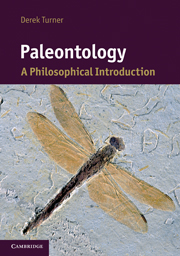Book contents
- Frontmatter
- Contents
- List of figures
- Acknowledgments
- 1 Introduction
- 2 A new way of seeing the fossil record
- 3 Punctuated equilibrium
- 4 Species and macroevolution
- 5 The case for species selection
- 6 Real trends, relative progress
- 7 Dynamics of evolutionary trends
- 8 Evolutionary contingency
- 9 Diversity, disparity, and the Burgess Shale
- 10 Molecular fossils
- Bibliography
- Index
3 - Punctuated equilibrium
Published online by Cambridge University Press: 05 June 2012
- Frontmatter
- Contents
- List of figures
- Acknowledgments
- 1 Introduction
- 2 A new way of seeing the fossil record
- 3 Punctuated equilibrium
- 4 Species and macroevolution
- 5 The case for species selection
- 6 Real trends, relative progress
- 7 Dynamics of evolutionary trends
- 8 Evolutionary contingency
- 9 Diversity, disparity, and the Burgess Shale
- 10 Molecular fossils
- Bibliography
- Index
Summary
“The data of paleontology cannot decide which picture is more accurate”
(Eldredge and Gould 1972, p. 99)“The model of PE is eminently testable”
(Gould and Eldredge 1977, p. 120)“The model of PE is scarcely a revolutionary proposal”
(Gould and Eldredge 1977, p. 117)“If PE has provoked a shift in paradigms for macroevolutionary theory …, the main insight for revision holds that all substantial evolutionary change must be reconceived as higher-level sorting”
(Gould and Eldredge 1993, p. 224)Gould and Eldredge have said some apparently conflicting things, both about the testability and about the theoretical significance of PE. My aim in this chapter is to get to the bottom of these issues, and to see if there might be some way of making sense of these apparently conflicting claims. I begin with the question of whether PE is all that interesting a model. Then in the second half of the chapter I will move on to consider questions about testability.
PE and macro/micro reductionism
A minimalist model of evolution is one that treats macroevolutionary patterns and trends as mere by-products of microevolutionary processes plus speciation events. Because such models are simplest and most parsimonious, it seems reasonable to start with a minimalist model and expand it only on an as-needed basis. The question is whether any such expansions are needed.
- Type
- Chapter
- Information
- PaleontologyA Philosophical Introduction, pp. 37 - 57Publisher: Cambridge University PressPrint publication year: 2011



